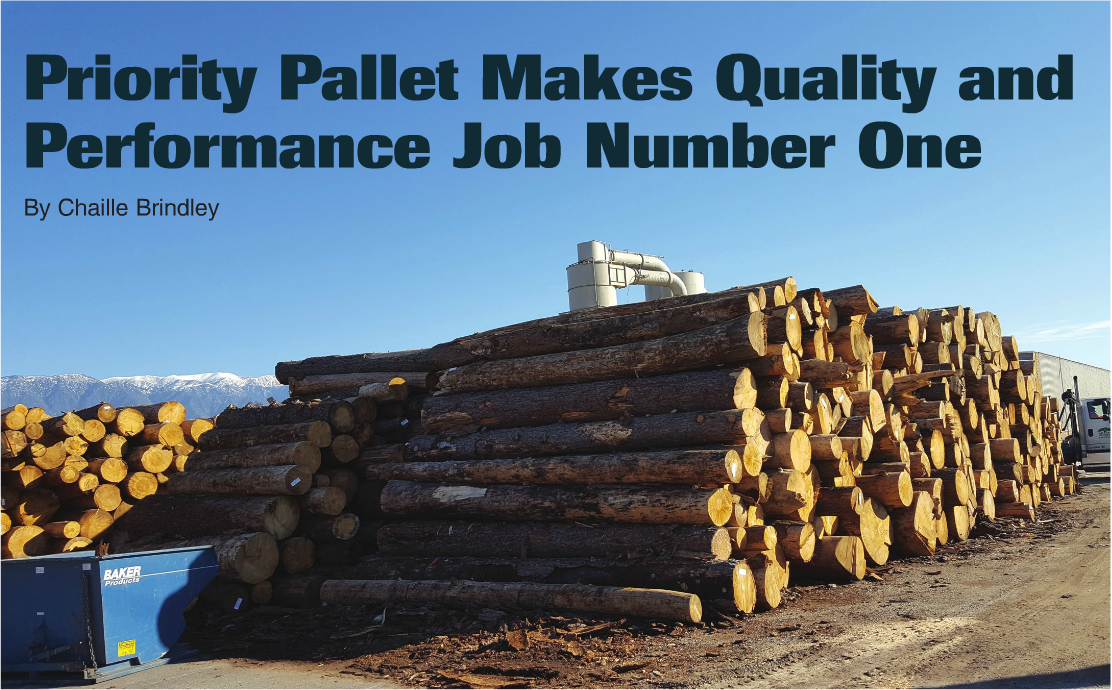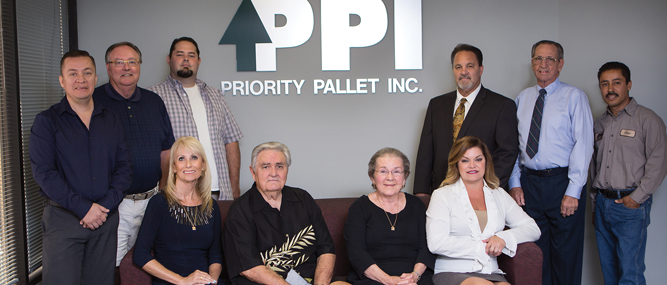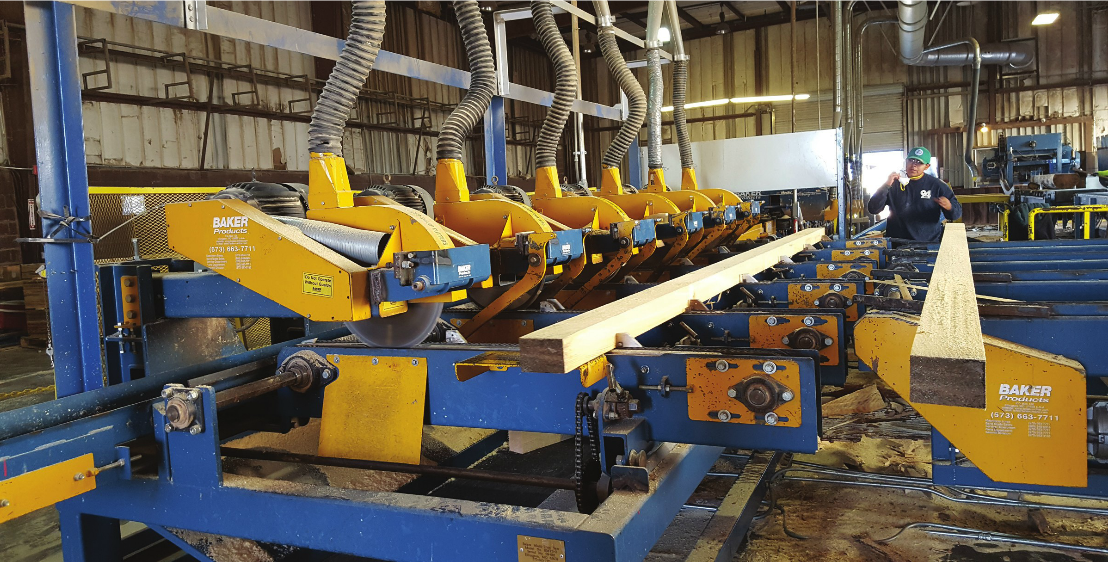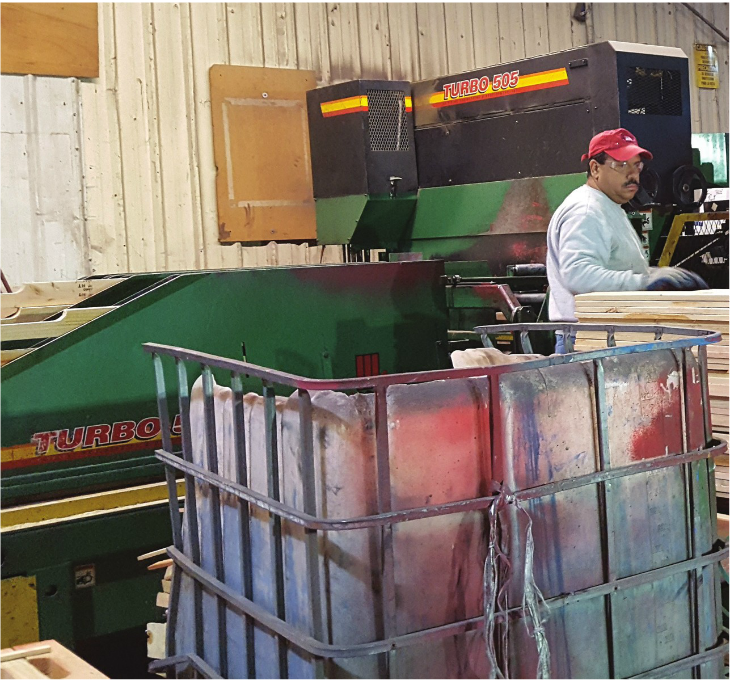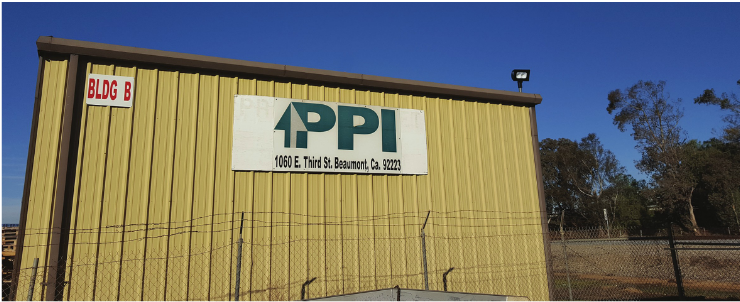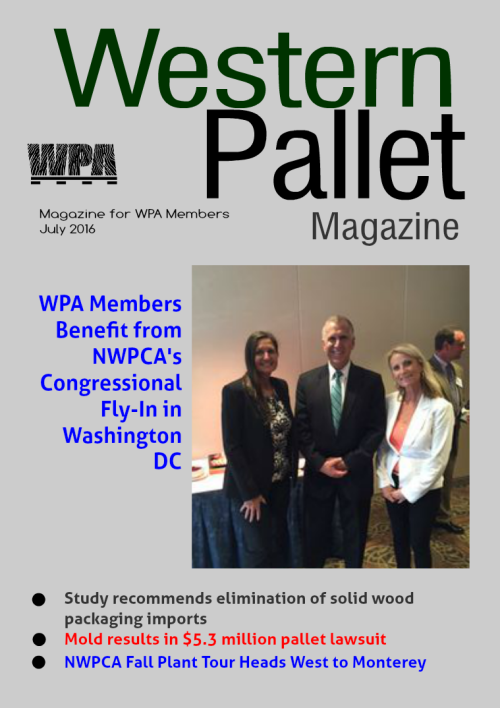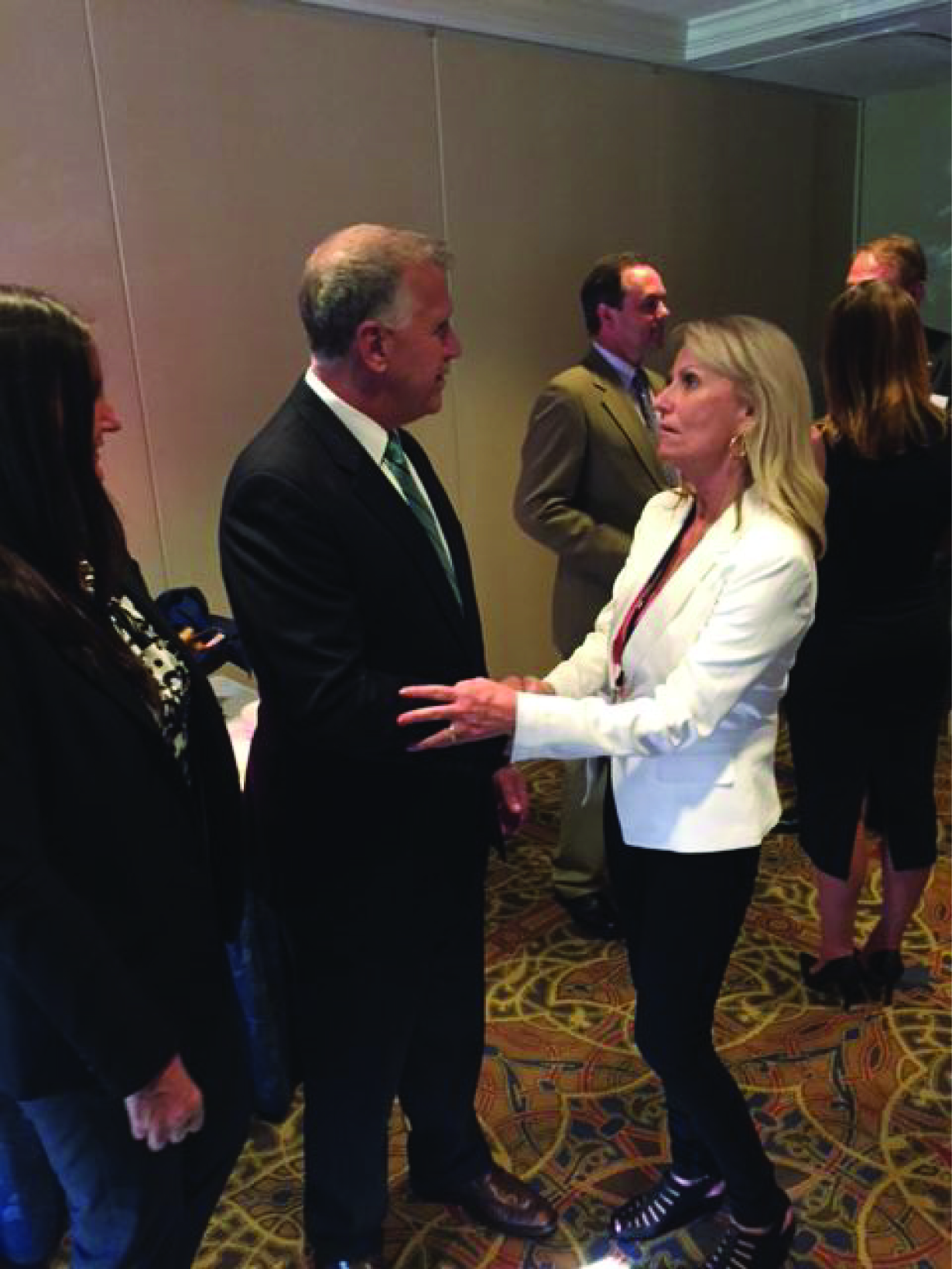Leadership Roundtable: A group of industry leaders discuss key issues from human resources to changes in the pallet lumber and core markets to robotics and competitive challenges. This is the first article in a multi-part series.
by Staff
Leadership Roundtable:
A group of industry leaders discuss key issues from human resources to changes in the pallet lumber and core markets to robotics and competitive challenges. This is the first article in a multi-part series.
As has become a recent tradition, the Enterprise editorial staff has moderated a roundtable discussion with key industry leaders from all aspects of the pallet supply chain and turned the discussion into a series of articles for the magazine. This lively discussion covers many key trends and current issues affecting the U.S. pallet industry. It provides a great snapshot of where we are today and what lies ahead.
The discussion was moderated by Chaille Brindley, publisher of Pallet Enterprise, and it addresses key concerns from the pallet lumber market to machinery to customer expectations and much more.
A special thanks goes to those who participated in the roundtable this year. Each participant is an accomplished industry leader who has something important to say. The panel includes: Kathy Dietrich of Commercial Lumber & Pallet, Ansir Junaid of Prime Woodcraft, Bill MacCauley of John Rock Inc., Bob Swan (father) and Rob Swan (son) of Battle Lumber Co., Bill Hildenbrand of Pallet Express, Lindsey Shean of Valley Pallet, and Nick Wenner and Luke Wenner of Pallet Services in Minnesota.
Pallet Enterprise: If you could wave a wand and fix any machinery or equipment challenge that you face, what would it be, and why?
 Bill Hildenbrand: Being a recycler mainly, I have found that automation can fix problems, but it also creates new ones for us. It hasn’t been a cure-all. We have two plants, and one has an automated repair line. Automation in our recycling helps save a lot of space in the building. If you have a confined space, it cuts down on forklift traffic. It can also help you maintain quality control. But it doesn’t resolve any problems that have to do with employee attendance — worker absenteeism.
Bill Hildenbrand: Being a recycler mainly, I have found that automation can fix problems, but it also creates new ones for us. It hasn’t been a cure-all. We have two plants, and one has an automated repair line. Automation in our recycling helps save a lot of space in the building. If you have a confined space, it cuts down on forklift traffic. It can also help you maintain quality control. But it doesn’t resolve any problems that have to do with employee attendance — worker absenteeism.
From my perspective, automation has created issues and solved them. Overall, it’s been good, but it certainly is not a cure-all.
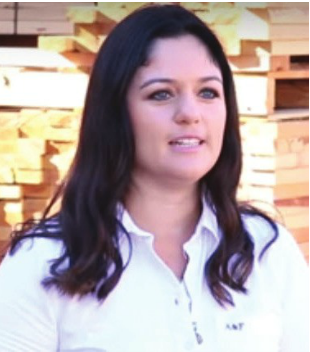 Lindsey Shean: Our biggest bottleneck comes at the tear-down process. In a perfect world, if there was some sort of magic cure to speed up and automate the tear-down process and to make it safer for our workers, that would be something we certainly would like to see.
Lindsey Shean: Our biggest bottleneck comes at the tear-down process. In a perfect world, if there was some sort of magic cure to speed up and automate the tear-down process and to make it safer for our workers, that would be something we certainly would like to see.
 Bill MacCauley: We’re pretty automated, but you can always do better. I’d like to see more robotics put in. The labor force is a constant challenge. You go from needing the labor to needing an electrical engineer to maintain the equipment. It all gets down to labor, and how do you cut labor out or use it more efficiently. I would like to see more robotics in the sawmill process. Grading and culling lumber is a challenge, but how do you do it with machines?
Bill MacCauley: We’re pretty automated, but you can always do better. I’d like to see more robotics put in. The labor force is a constant challenge. You go from needing the labor to needing an electrical engineer to maintain the equipment. It all gets down to labor, and how do you cut labor out or use it more efficiently. I would like to see more robotics in the sawmill process. Grading and culling lumber is a challenge, but how do you do it with machines?
Pallet Enterprise: How has your mixture of lumber types and dimension changed over the past few years? For example, are you using more softwood compared to hardwood? Are you using more cut stock or cants? What about recycled lumber? For pallet recyclers, have your core sources or supplies changed much? Why? How have raw materials and supplies changed lately, and where do you see them headed?
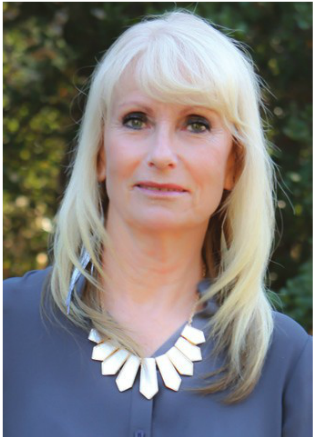 Kathleen Dietrich: We’re kind of waiting for the dust to settle with the countervailing duties on Canadian softwood lumber. We’re in a very foreign area right now. We haven’t had to deal with it in a long time. We’re in a wait-and-see mode. We buy cut stock and dimension lumber. Like everybody else, we have to fly by the seat of our pants and see what makes sense cost-wise. Price increases are really tough for us and our customers to swallow.
Kathleen Dietrich: We’re kind of waiting for the dust to settle with the countervailing duties on Canadian softwood lumber. We’re in a very foreign area right now. We haven’t had to deal with it in a long time. We’re in a wait-and-see mode. We buy cut stock and dimension lumber. Like everybody else, we have to fly by the seat of our pants and see what makes sense cost-wise. Price increases are really tough for us and our customers to swallow.
Lumber prices have risen 45% since last fall. When you have a customer and need to raise your price 25 cents, that’s one thing. When you have to raise it $2-3, it sends everyone scrambling. We have to wait and see what happens.
Lindsey Shean: The one thing that’s going to happen…I think we’re going to see a lot of customers go to a low-grade pallet…an expendable pallet if that’s an option for them.
We’re sort of in a different position right now. We’re not hurting for recycled pallets, but the impact of softwood pricing is going to drive more people to recycled pallets. We’ve already seen it happen with two larger customers. They loved the new pallet we were supplying, but they’re back on recycled because they don’t want to absorb the price increase for softwood. Some people may move to rental pallets; it’s a scary place to be in. There are so many unknowns.
 Ansir Junaid: Our company is also involved in commodities, such as handling and recycling corrugated and shrink wrap. A notable change we see is that when consumers order merchandise online, they take the packaging and throw it away—instead of going back to the distribution center. It becomes consumer scrap. This may create a supply/demand issue.
Ansir Junaid: Our company is also involved in commodities, such as handling and recycling corrugated and shrink wrap. A notable change we see is that when consumers order merchandise online, they take the packaging and throw it away—instead of going back to the distribution center. It becomes consumer scrap. This may create a supply/demand issue.
We have seen approximately 100,000 storefronts dissipate due to growth of e-commerce in the last six months, and the need for pallets may go down. If you don’t have a store, the pallet will stay in the DC, and it will impact our supply chain in the long term. On the other hand Amazon is working to build another 25 to 30 distribution centers. In the short term, there will be significant growth. Even online retailers need a supply chain, and an infrastructure.
Bill MacCauley: No one likes the kiln-dried softwood increases. It’s driving people to look back at hardwood. From what I see, we’re making more and more knock-off 48×40 pallets because the quality of the cores is so low. So there’s more demand for one-way, 48×40 pallets.
Bill Hildenbrand: We’ve been working for Amazon for four years. Initially they were much more of a buyer. Ansir Junaid mentioned some of the dynamics taking place. Amazon has gotten to be more of a pallet producer, and they’re buying less. That’s tens of millions of pallets nationwide.
As Bill MacCauley said, the pool is terrible. The pallets going into the pool are inferior. This whole quality issue will continue to go on and on. Ultimately, what worries us the most is the big guns who are our clients, they are going to be driven by cost, and the total lack of cost and the availability of a rental system.
 Rob Swan: Over the past few years, we have seen many of our customers reduce dimensions to save costs. We are still a majority hardwood sawmill, and most of our pallets are made of hardwood, but we have been utilizing more green southern yellow pine due to cheaper prices and easier availability. This has helped us lower costs and meet demand for our customers when hardwood was scarce.
Rob Swan: Over the past few years, we have seen many of our customers reduce dimensions to save costs. We are still a majority hardwood sawmill, and most of our pallets are made of hardwood, but we have been utilizing more green southern yellow pine due to cheaper prices and easier availability. This has helped us lower costs and meet demand for our customers when hardwood was scarce.
Our customers are very price sensitive, so we do everything we can do to reduce costs. The Pallet Design System™ has been a great asset for us because it allows us to show customers ways to reduce costs without harming the integrity of the pallet.
Luke Wenner: We are using more kiln-dried softwood now than a few years ago. The main reason being customers need dried wood versus green material. Mold and moisture are becoming more and more of an issue for many of our customers, so the dried pine has proven to be the best option for most. Currently, with the high cost of kiln-dried and heat-treated lumber, some customers may switch to partial hardwood or all hardwood construction.
Pallet Enterprise: How many of you would say you’ve seen a significant move to rental pallets in the last year or two? Has that stabilized or do you have more customers looking into it?
Ansir Junaid: Many of our customers are shifting toward a pooled pallet—six customers in the last year switched to pooling companies. There is competitive pricing between CHEP and PECO—it is starting to compete again with prices for recycled pallets. Customers may prefer a rental pallet when it’s affordable and if recycled pallets have quality issues. Since new pallet manufacturing is stagnant, it affects the quality of recycled pallets.
Lindsey Shean: In the last two years, we saw two larger customers move, one from a new GMA and the other using a recycled pallet. Both customers went to rental pallets.
Pallet Enterprise: When customers move to rental pallets, what are the key drivers?
Lindsey Shean: For one customer, pricing was an issue. Another customer that used recycled pallets, their driver was more of a quality issue. It was all a material handling thing. Price and quality — both reasons came into play.
Pallet Enterprise: Almost everyone reports having problems finding good workers. What are you doing to address this problem? Is it working? Have you discovered any ways to improve performance of personnel or employee retention?
Bill Hildenbrand: We have found everywhere there is an epidemic of drug use. It’s worse than ever. We are trying everything in our power to eliminate people with a drug problem from coming into our facility. That’s become a massive problem. And trying to help people who become addicted or relapse…It’s an issue for hiring and retention.
Kathleen Dietrich: We’re early into an incentive bonus program. If someone refers a person for employing, they get an incentive bonus after the person has worked a certain number of days, and the new employee gets a bonus. We’ve seen a little uptick in hiring good people since then.
Ansir Junaid: We continuously strive to create an ideal work setting to have a better facility, superior forklifts, safer practices, and foster gratitude within the workplace. If employees feel like they work in a safe and clean environment, coupled with high spirits, it fosters retention. We benefit tremendously when our facilities are more safe and presentable.
Rob Swan: One of the many things we are doing to try to combat this issue is offering our employees more incentives. We started with an attendance-based system that allows the employee to gain extra vacation days for perfect attendance. This is a new system that we have just implemented, but it seems to be working so far. We also pay our machine operators on a production-based bonus system that gives them incentive and motivation to build more pallets.
 Nick Wenner: We have made wage adjustments upwards, mainly in our plant personnel to compete with other employers (particularly manufacturers) for what seems to be a shrinking labor pool. We are also trying to more actively engage our employees wherever we can to try to make working here more than just a paycheck.
Nick Wenner: We have made wage adjustments upwards, mainly in our plant personnel to compete with other employers (particularly manufacturers) for what seems to be a shrinking labor pool. We are also trying to more actively engage our employees wherever we can to try to make working here more than just a paycheck.
We all face many significant challenges in our lives, and coming to the realization that not everyone has positive resources for seeking wise counsel or support in a time of need is something we are trying to be more cognizant of. For some their place of work may be one of the few stable things in their life. We are looking for ways to build on that.
We are rolling out a chaplain program to offer resources to our employees in times of need and allow time for relationships to be formed. We’re also trying to be more intentional about celebrating successes, recognizing individuals and groups within the company and in general… just trying to show our people that they are loved and valued by our company and by our God.
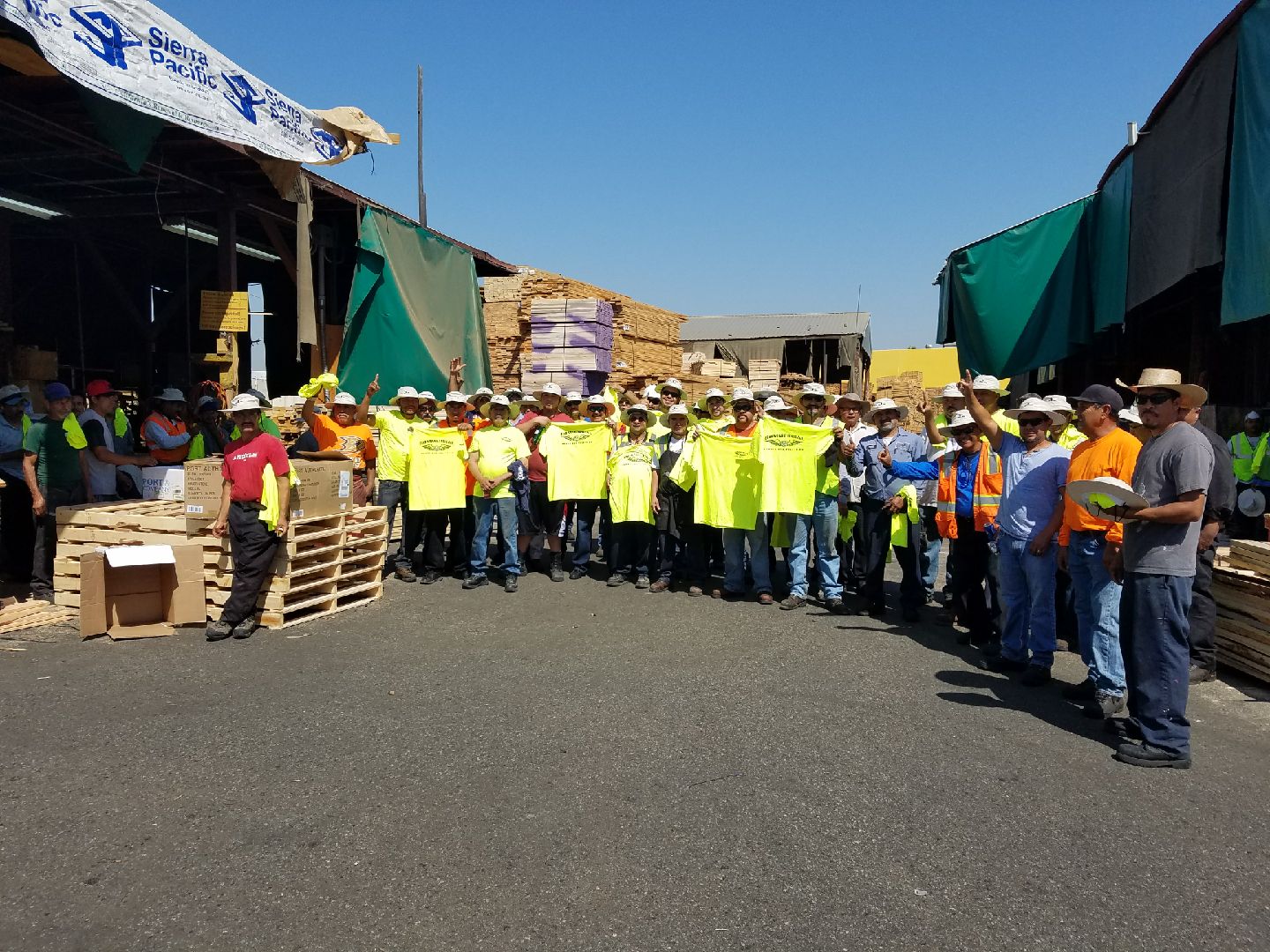
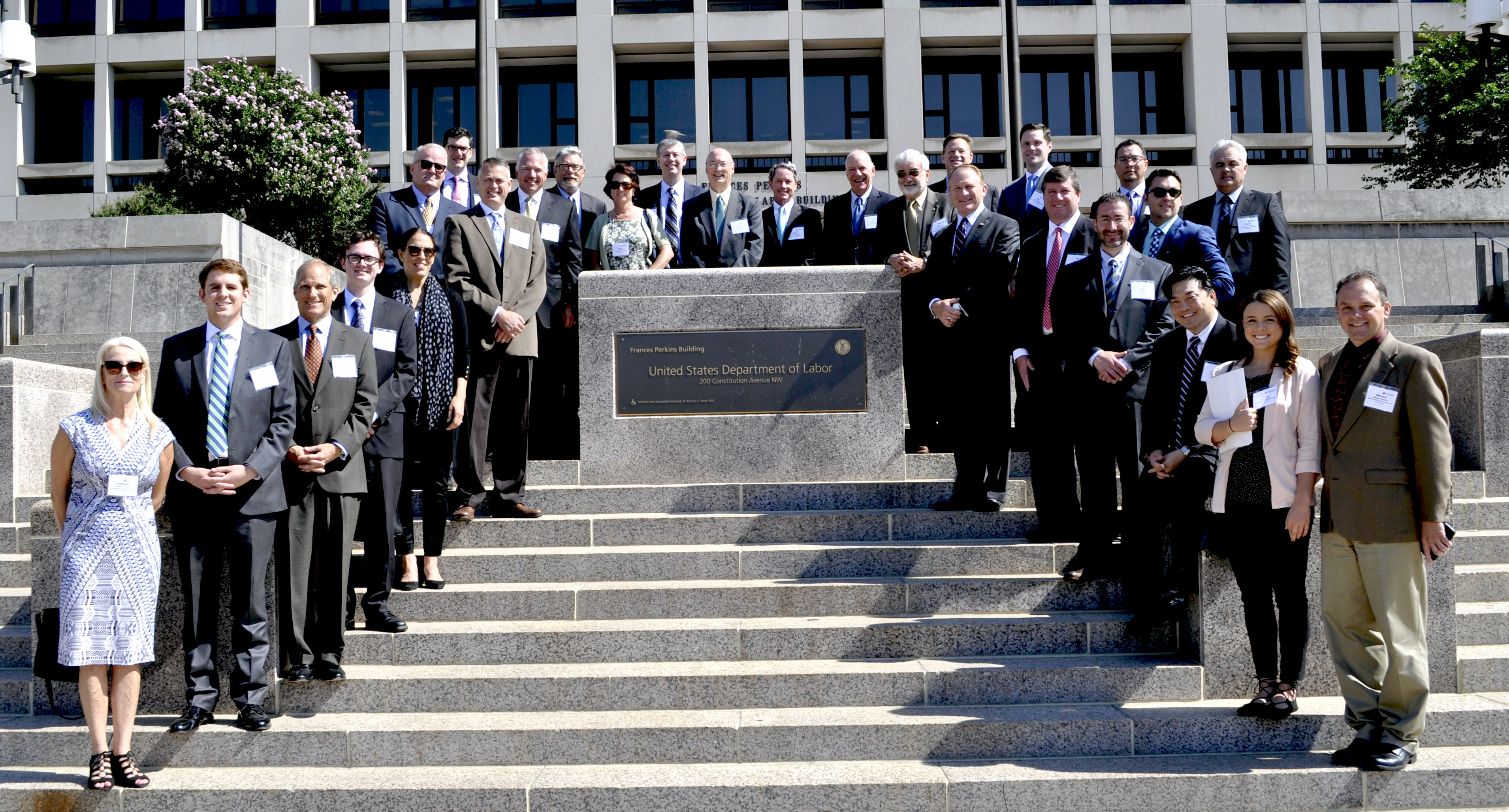

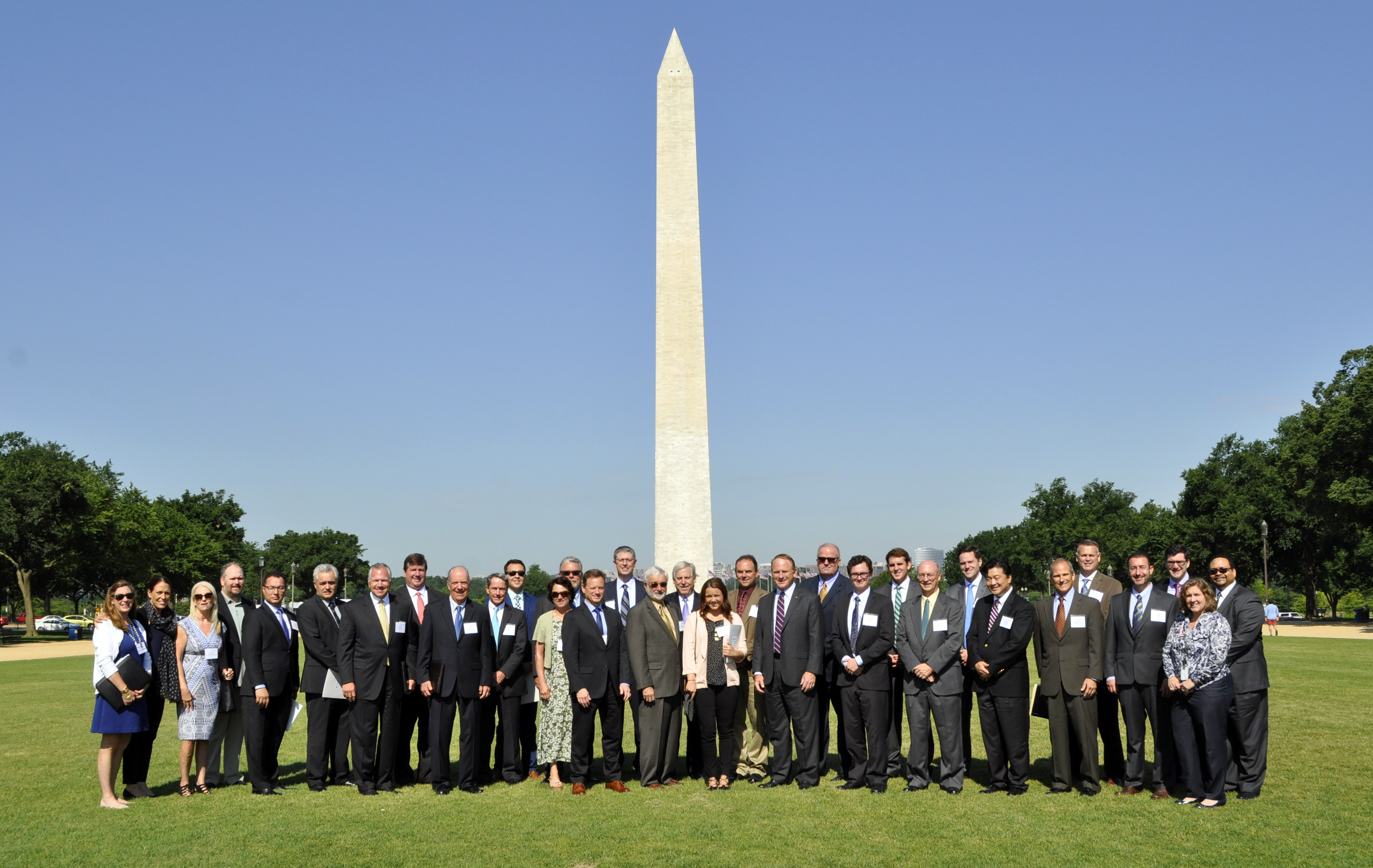

 “We have not yet felt the impact, other than lumber prices skyrocketing as everyone speculates. As pellet kits are included for the first time, we are on a “wit and see” mode to see what changes occur once all the dust has settled. Countervailing but pallet kits? This is a whole new world.”
“We have not yet felt the impact, other than lumber prices skyrocketing as everyone speculates. As pellet kits are included for the first time, we are on a “wit and see” mode to see what changes occur once all the dust has settled. Countervailing but pallet kits? This is a whole new world.” “The announcement on May 8th on Countervailing Duties (CVD) of 19.88% with a 90 day retroactive period against certain wood packaging products manufactured from softwood lumber (SPF) has affected a number of Canadian exporters adversely. In the wood packaging industry, the area most affected is the annual export trade of around 300,000 mbf of unassembled pallets (HTSUS 4415.20.8000) and notched stringers (HTSUS 4415.20.8000). Also affected are smaller volumes of softwood lumber pallet cut stock. Many of the manufacturers affected had anticipated the duties but early this year. Most have lain off staff, but some have closed operations altogether. The impact that will be felt by the U.S. pallet manufactures is considerable, they are faced with replacing long established supplies of high quality SPF raw material with substantially higher priced domestic material.
“The announcement on May 8th on Countervailing Duties (CVD) of 19.88% with a 90 day retroactive period against certain wood packaging products manufactured from softwood lumber (SPF) has affected a number of Canadian exporters adversely. In the wood packaging industry, the area most affected is the annual export trade of around 300,000 mbf of unassembled pallets (HTSUS 4415.20.8000) and notched stringers (HTSUS 4415.20.8000). Also affected are smaller volumes of softwood lumber pallet cut stock. Many of the manufacturers affected had anticipated the duties but early this year. Most have lain off staff, but some have closed operations altogether. The impact that will be felt by the U.S. pallet manufactures is considerable, they are faced with replacing long established supplies of high quality SPF raw material with substantially higher priced domestic material.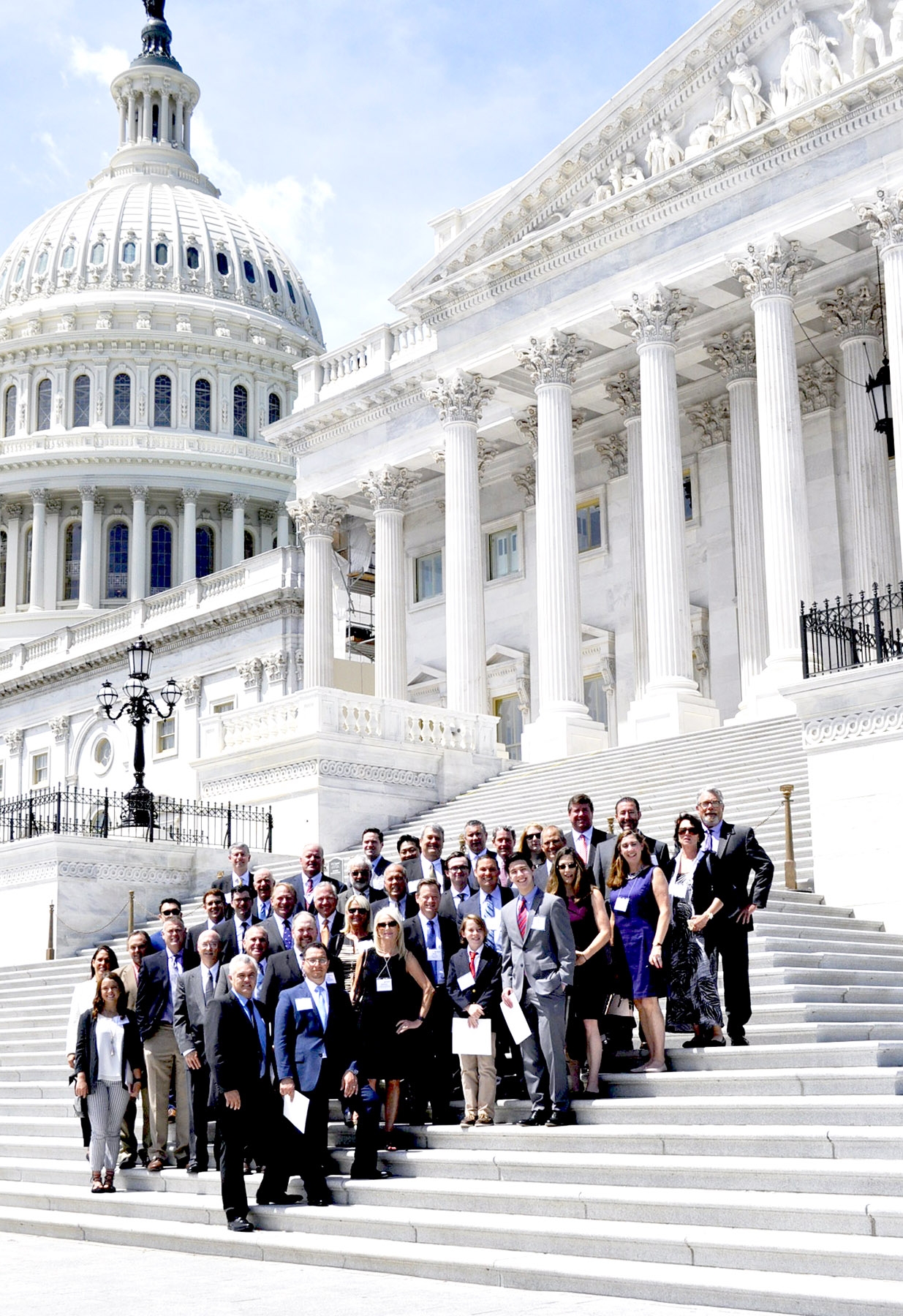



 Bill Hildenbrand: Being a recycler mainly, I have found that automation can fix problems, but it also creates new ones for us. It hasn’t been a cure-all. We have two plants, and one has an automated repair line. Automation in our recycling helps save a lot of space in the building. If you have a confined space, it cuts down on forklift traffic. It can also help you maintain quality control. But it doesn’t resolve any problems that have to do with employee attendance — worker absenteeism.
Bill Hildenbrand: Being a recycler mainly, I have found that automation can fix problems, but it also creates new ones for us. It hasn’t been a cure-all. We have two plants, and one has an automated repair line. Automation in our recycling helps save a lot of space in the building. If you have a confined space, it cuts down on forklift traffic. It can also help you maintain quality control. But it doesn’t resolve any problems that have to do with employee attendance — worker absenteeism. Lindsey Shean: Our biggest bottleneck comes at the tear-down process. In a perfect world, if there was some sort of magic cure to speed up and automate the tear-down process and to make it safer for our workers, that would be something we certainly would like to see.
Lindsey Shean: Our biggest bottleneck comes at the tear-down process. In a perfect world, if there was some sort of magic cure to speed up and automate the tear-down process and to make it safer for our workers, that would be something we certainly would like to see. Bill MacCauley: We’re pretty automated, but you can always do better. I’d like to see more robotics put in. The labor force is a constant challenge. You go from needing the labor to needing an electrical engineer to maintain the equipment. It all gets down to labor, and how do you cut labor out or use it more efficiently. I would like to see more robotics in the sawmill process. Grading and culling lumber is a challenge, but how do you do it with machines?
Bill MacCauley: We’re pretty automated, but you can always do better. I’d like to see more robotics put in. The labor force is a constant challenge. You go from needing the labor to needing an electrical engineer to maintain the equipment. It all gets down to labor, and how do you cut labor out or use it more efficiently. I would like to see more robotics in the sawmill process. Grading and culling lumber is a challenge, but how do you do it with machines? Ansir Junaid: Our company is also involved in commodities, such as handling and recycling corrugated and shrink wrap. A notable change we see is that when consumers order merchandise online, they take the packaging and throw it away—instead of going back to the distribution center. It becomes consumer scrap. This may create a supply/demand issue.
Ansir Junaid: Our company is also involved in commodities, such as handling and recycling corrugated and shrink wrap. A notable change we see is that when consumers order merchandise online, they take the packaging and throw it away—instead of going back to the distribution center. It becomes consumer scrap. This may create a supply/demand issue. Rob Swan: Over the past few years, we have seen many of our customers reduce dimensions to save costs. We are still a majority hardwood sawmill, and most of our pallets are made of hardwood, but we have been utilizing more green southern yellow pine due to cheaper prices and easier availability. This has helped us lower costs and meet demand for our customers when hardwood was scarce.
Rob Swan: Over the past few years, we have seen many of our customers reduce dimensions to save costs. We are still a majority hardwood sawmill, and most of our pallets are made of hardwood, but we have been utilizing more green southern yellow pine due to cheaper prices and easier availability. This has helped us lower costs and meet demand for our customers when hardwood was scarce. Nick Wenner: We have made wage adjustments upwards, mainly in our plant personnel to compete with other employers (particularly manufacturers) for what seems to be a shrinking labor pool. We are also trying to more actively engage our employees wherever we can to try to make working here more than just a paycheck.
Nick Wenner: We have made wage adjustments upwards, mainly in our plant personnel to compete with other employers (particularly manufacturers) for what seems to be a shrinking labor pool. We are also trying to more actively engage our employees wherever we can to try to make working here more than just a paycheck.